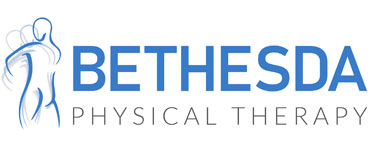COVID-19 primarily affects the lungs but also can have heart and muscle/joint complications. People that have been affected directly by the coronavirus or who have limited physical activity due to self-isolation may have similar issues – increased fatigue, weakness, difficulty breathing, decreased endurance, and reduced balance1,8. The good news – we are here to help!
COVID-19 is a restrictive lung disease, meaning that it prevents the lungs from fully expanding with air. As therapists, we can help ensure that every other part of the body involving breathing is working at its highest capacity.
We take an individualized approach with each patient. We perform a thorough evaluation that includes vital monitoring (heart rate, blood pressure, breathing function, etc.), balance testing, strength and flexibility testing, and activity tolerance.
These tests and measures establish a baseline of function. We then develop a plan to progress safely to the highest level of function.
How we do this:
- Capacity testing: Using an appropriate measure for each patient, we establish a safe baseline of activity5
- Musculoskeletal evaluation: Looking at the whole body to determine specific areas we need to address in order to meet each patient’s goals
- This includes chest wall mobility screening and breathing assessment1,7
- Manual therapy: Improving chest and stomach expansion so the lungs can work to their full capacity2,3
- Stretching techniques that incorporate breathing
- Special tools and other equipment to improve soft tissue mobility and reduce restriction for breathing2
- Corrective exercise: Strengthening the diaphragm and postural muscles used to optimize breathing7,9
- Specific breathing techniques to help strengthen the muscles used in breathing
- Postural exercises to optimize breathing mechanics5
- Training efforts to maintain proper mechanics and posture during daily tasks
- Balance and gait training: Reintegrating safely to community activities
- Goal-oriented functional activities: Providing comprehensive treatments focused on patient-specific goals in order to improve quality of life6
- Safe-discharge planning: Educating patients to know the enemy they are fighting, with emphasis on safe vital levels, symptom management, and how to progress safely on their own
- No matter what, our patients will always be our patients – and we are only just a phone call away
Evidence has shown that manual therapy followed by corrective exercise improves overall lung function3. As physical therapists, we can identify at what point mechanics may be impaired and create a program to optimize movement for the whole body.
By closely monitoring vital signs (heart rate, oxygen levels, etc.), we can help patients safely progress toward their goals. We teach strategies to minimize stress on the heart and lung systems and the rest of the body.
Our ultimate goal is to return patients to their prior levels of function, improving their quality of life by getting them back to normal.
References:
- DeTurk, W. E., & Cahalin, L. P. (2018). Cardiovascular and pulmonary physical therapy: an evidence-based approach. New York: McGraw-Hill Professional.
- Dysfunctional Breathing Part 2: Intervention Strategies. (n.d.). Retrieved from MedBridge
- Engel, R. M., & Vemulpad, S. (2007). The Effect of Combining Manual Therapy with Exercise on the Respiratory Function of Normal Individuals: A Randomized Control Trial. Journal of Manipulative and Physiological Therapeutics, 30(7), 509–513. doi: 10.1016/j.jmpt.2007.07.006
- Gappmaier, E. (2012). Exercise Evaluations in the Physical Therapy Clinic: The Submaximal Clinical Exercise Tolerance Test (SXTT) to Establish Safe Exercise Prescription Parameters for Patients with Chronic Disease and Disability. Cardiopulmonary Physical Therapy Journal, 23(2), 19–29. doi: 10.1097/01823246-201223020-00004
- Kim, S., Jung, J., & Kim, N. (2019). The Effects of McKenzie Exercise on Forward Head Posture and Respiratory Function. The Journal of Korean Physical Therapy, 31(6), 351–357. doi: 10.18857/jkpt.2019.31.6.351
- Mendes, M. D. A., Silva, I. D., Ramires, V., Reichert, F., Martins, R., Ferreira, R., & Tomasi, E. (2018). Metabolic equivalent of task (METs) thresholds as an indicator of physical activity intensity. Plos One, 13(7). doi: 10.1371/journal.pone.0200701
- Respiratory Muscle Physiology . (n.d.). Retrieved from MedBridge
- Sohrabi, C., Alsafi, Z., Oneill, N., Khan, M., Kerwan, A., Al-Jabir, A., … Agha, R. (2020). World Health Organization declares global emergency: A review of the 2019 novel coronavirus (COVID-19). International Journal of Surgery, 76, 71–76. doi: 10.1016/j.ijsu.2020.02.034
- Woo, S.-D., Kim, T.-H., & Lim, J.-Y. (2016). The effects of breathing with mainly inspiration or expiration on pulmonary function and chest expansion. Journal of Physical Therapy Science, 28(3), 927–931. doi: 10.1589/jpts.28.927
Written by Corey Higgins, DPT, Manchester PA Center
